New COVID-19 modelling: Almost 40% of LTC homes in active outbreak, mortality rate could double by Feb.
Posted January 12, 2021 11:33 am.
Last Updated January 12, 2021 4:16 pm.
Ontario’s long-term care sector continues to be devastated by the COVID-19 pandemic and ICU occupancy is increasing with “real consequences for health” are among the key findings in the province’s latest round of COVID-19 data and modelling.
On Friday, Premier Doug Ford offered an ominous clue about what Ontarians can expect from the projections, saying “you will fall off your chair” when the new data is released.
Ontario health officials say almost 40 percent of long-term care homes are reporting active COVID-19 outbreaks and since January 1, a total of 198 residents and two staff members have died from the virus.
The latest forecast suggests there will be more deaths across the province’s long-term care sector in the second wave than the first.
Under what the province labels “worst-case scenario”, deaths among residents of Ontario long-term care homes could reach more than 2,600 by February 14.
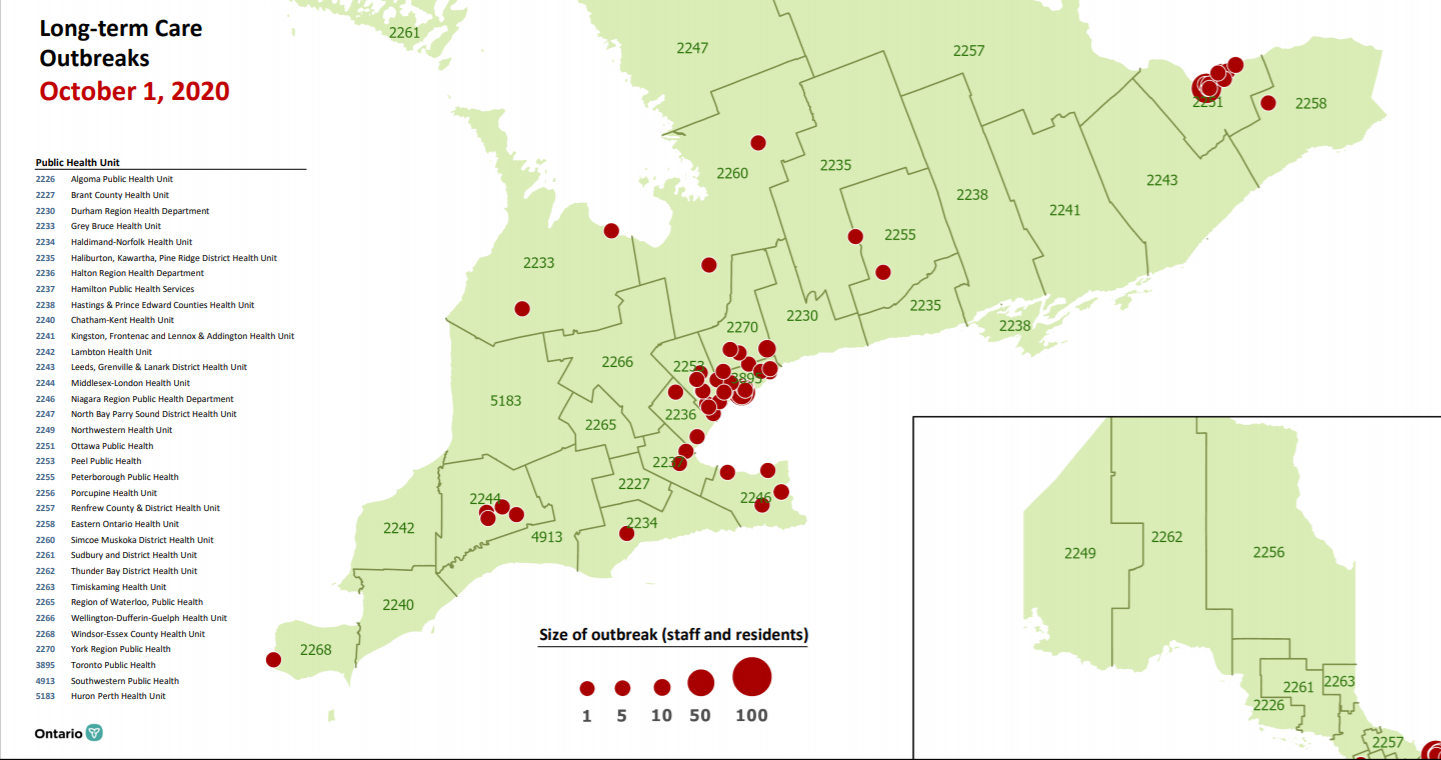
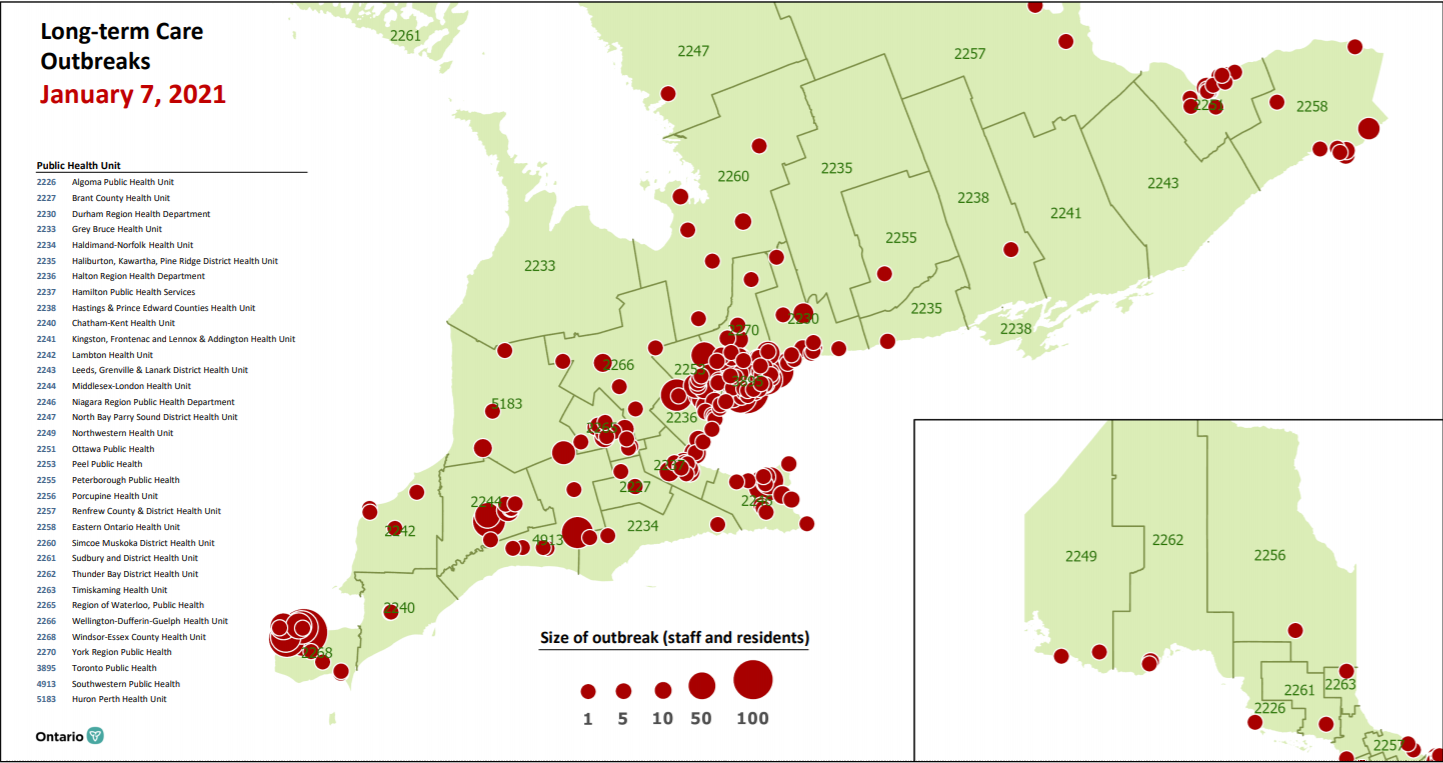
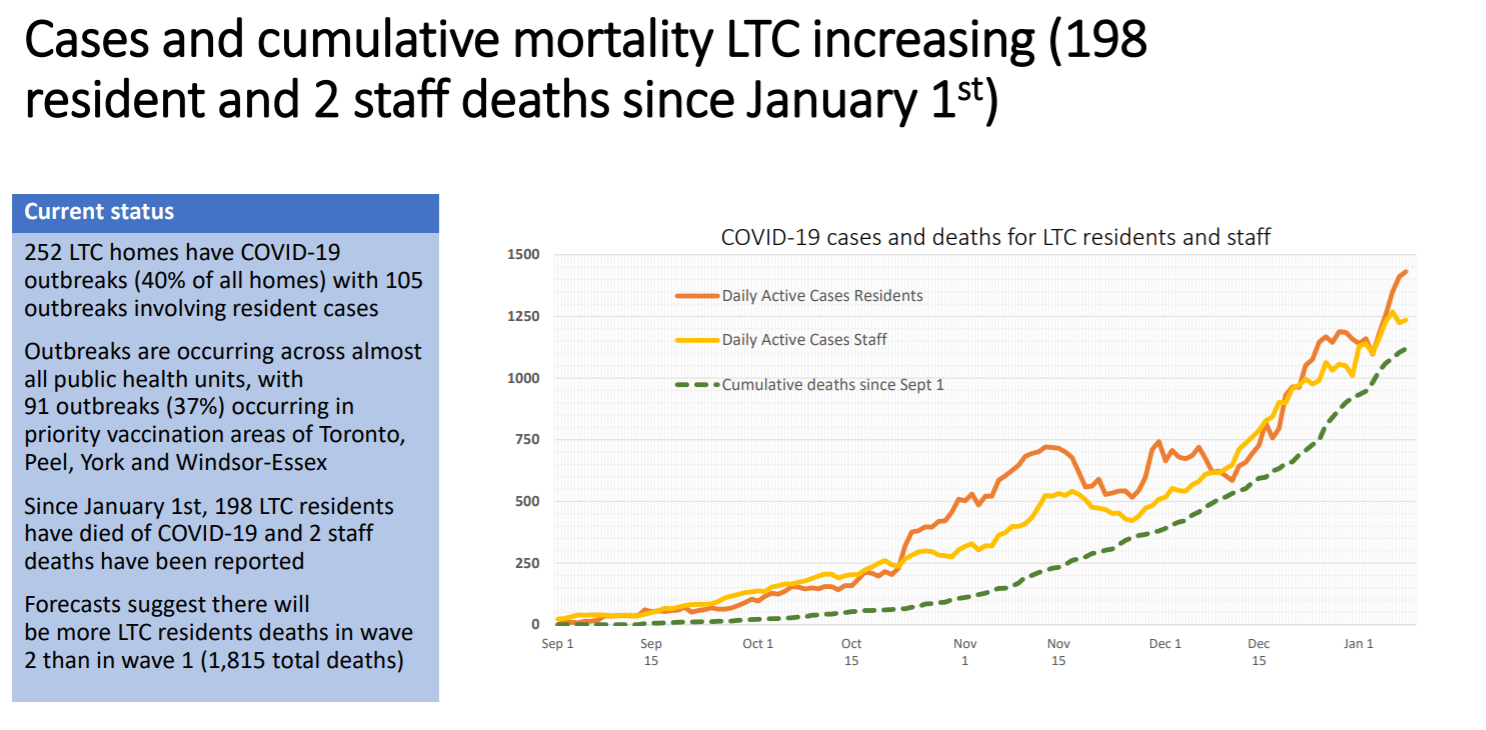
Ontario officials say outbreaks are being reported across almost all public health units, with 91 outbreaks and 37 percent “occurring in priority vaccination areas of Toronto, Peel, York, and Windsor-Essex.
“If we do not follow these restrictions, COVID-19 will continue to aggressively spread before vaccines have the chance to protect us,” Dr. Adalsteinn Brown, one of the experts behind the projections, said.
“This will have tragic consequences for us, for our health, for our province, for our health system.”
On Tuesday, health officials confirmed that ICU occupancy is now over 400 beds with more surgeries being cancelled as a result.
Brown says health-care providers will face difficult choices in the weeks ahead.
“These are choices that no doctor ever wants to make, and no family ever wants to hear,” he said.
“There will be choices about who will get the care they need and who will not.”
Projections put ICU occupancy around 500 beds by mid-January with the potential of over 1,000 beds in February “in more severe but realistic scenarios.”
Over the past two weeks, there has been an average of 2.34 percent daily case growth in Ontario.
Brown says that if the province’s COVID-19 growth rate is at five percent, Ontario will see more than 20,000 new cases a day by the middle of next month.
If the rate climbs to seven percent, that means the province will see 40,000 new daily cases.
“The access to care deficit will continue to increase with real consequences for health,” health officials wrote.
In December, the province said, under the worst-case scenario, “Ontario will see more than 1,500 beds occupied in ICUs by mid-January.”
Last week, the CEO of Windsor Regional Hospital said they were forced to cancel all non-urgent, elective surgeries indefinitely. One day earlier, a hospital network in London, Ont., said it’s storing bodies in a mobile unit after its morgue reached capacity.
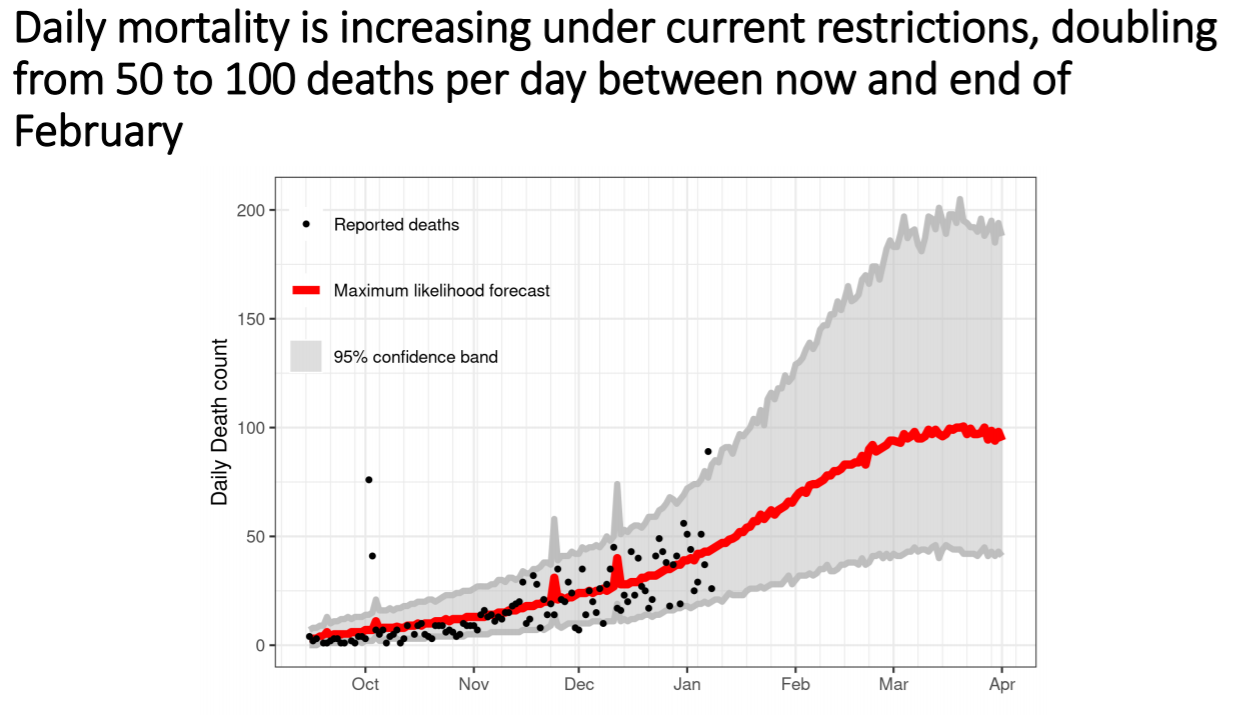
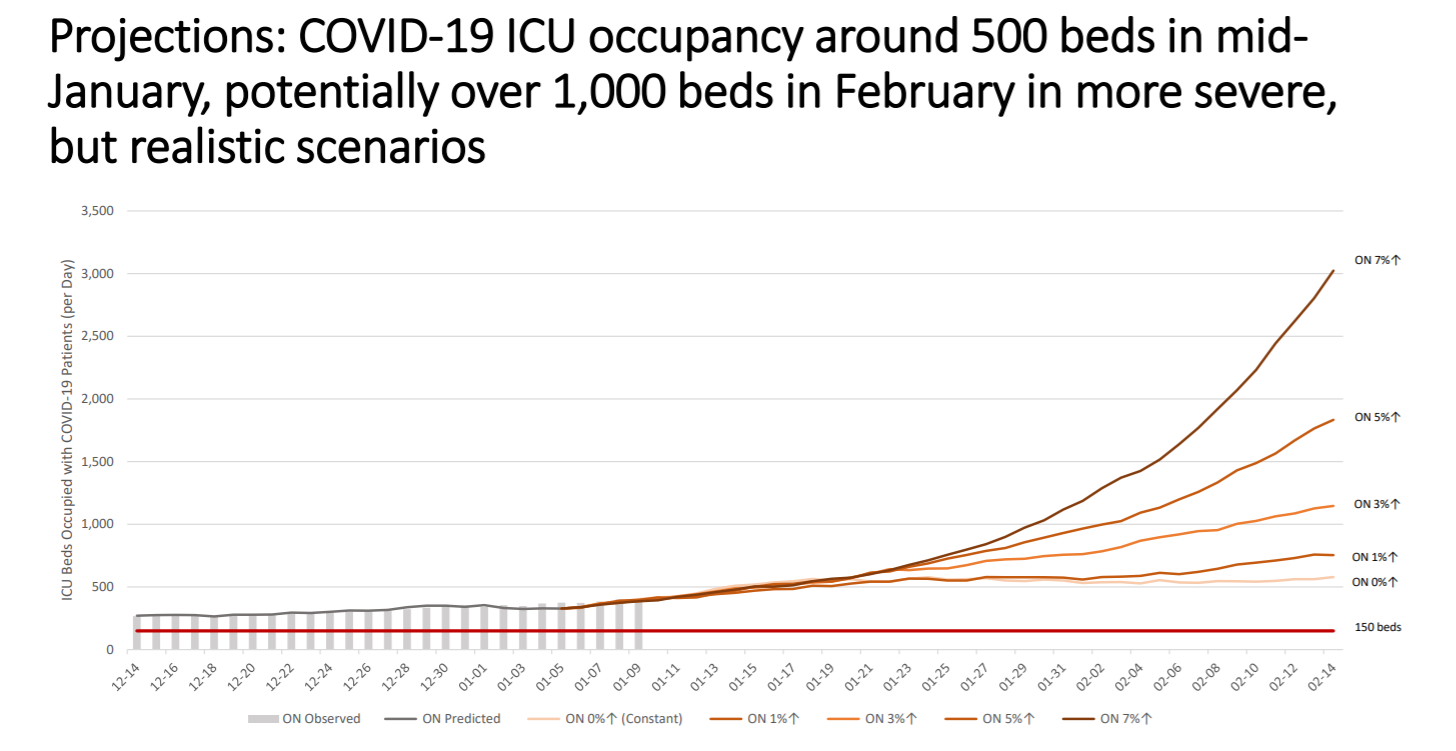
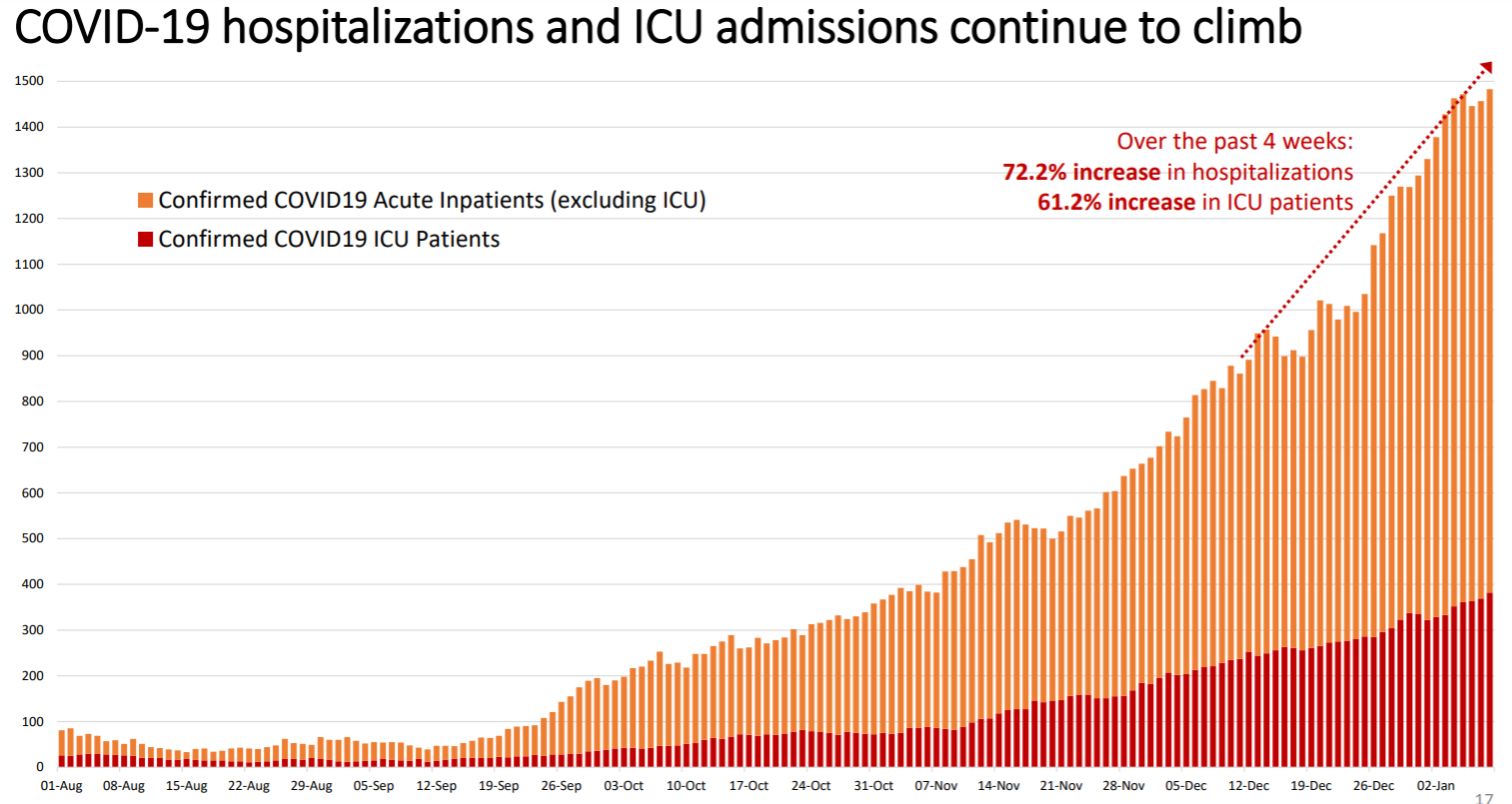
Health officials say that the daily mortality rate continues to increase despite the current level of restrictions.
As a result, they say the daily number of deaths could double from around 50 to 100 people per day from now until the end of February.
The province is reporting a 72.2 percent increase in hospitalizations over the past four weeks with a 61.2 percent increase in ICU patients.
Additionally, one-quarter of hospitals have no ICU beds free, while another quarter only has one to two beds free as a result of the pandemic.
The province says “mobility and contacts between people have not decreased with the current restrictions” showing that despite many public health units being placed under Ontario’s ‘Grey-Zone‘, there was a pre-holiday spike in numbers.
According to survey data, the majority of Ontarians are helping limit spread by following health and safety measures as well as lockdown restrictions.
“However, case numbers will not decline until more of the population follows their example.”
The survey data finds that almost two-thirds of the population is acting in a way that will decrease COVID-19 spread.
40 percent of people surveyed said people in their neighbourhood are adhering to physical distancing measures with 50 percent of respondents saying they did not visit anyone from outside their household in the last four weeks.
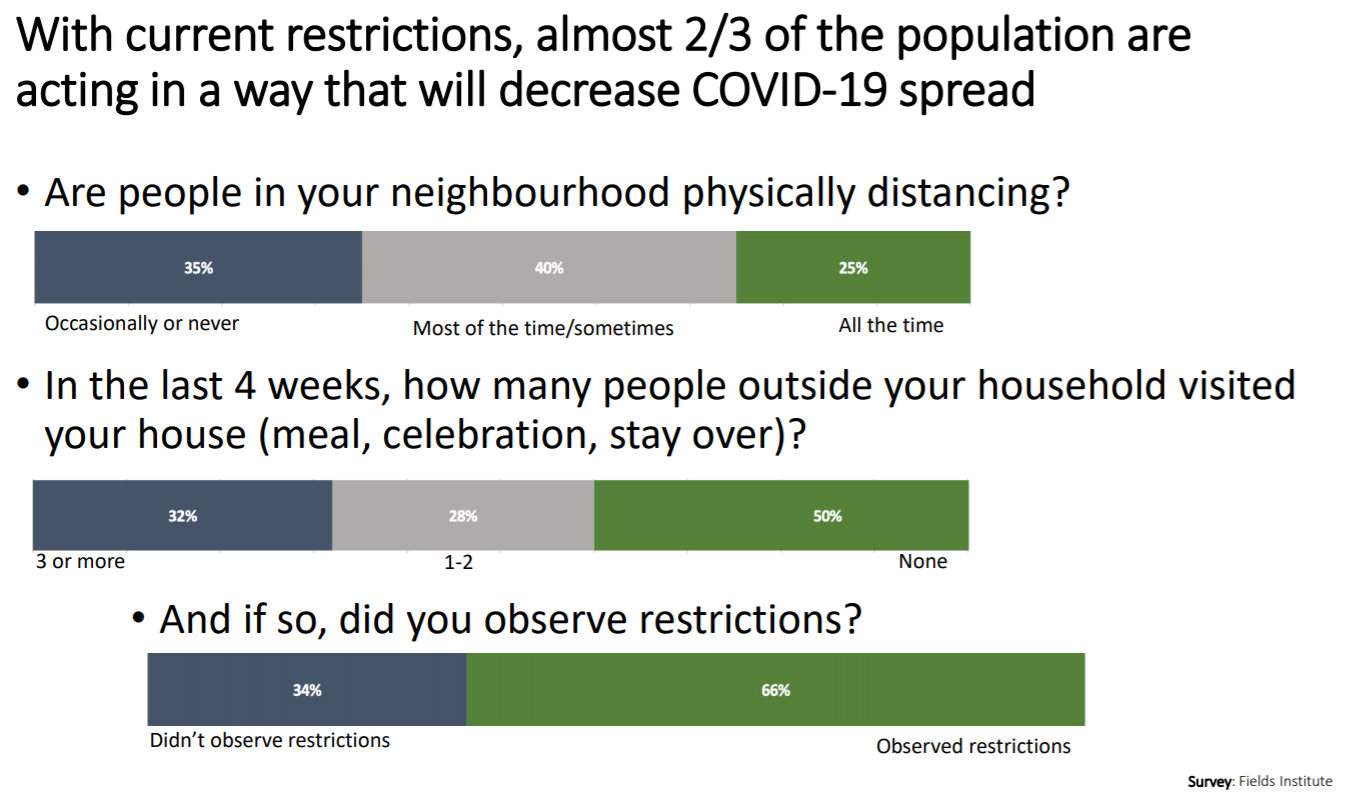
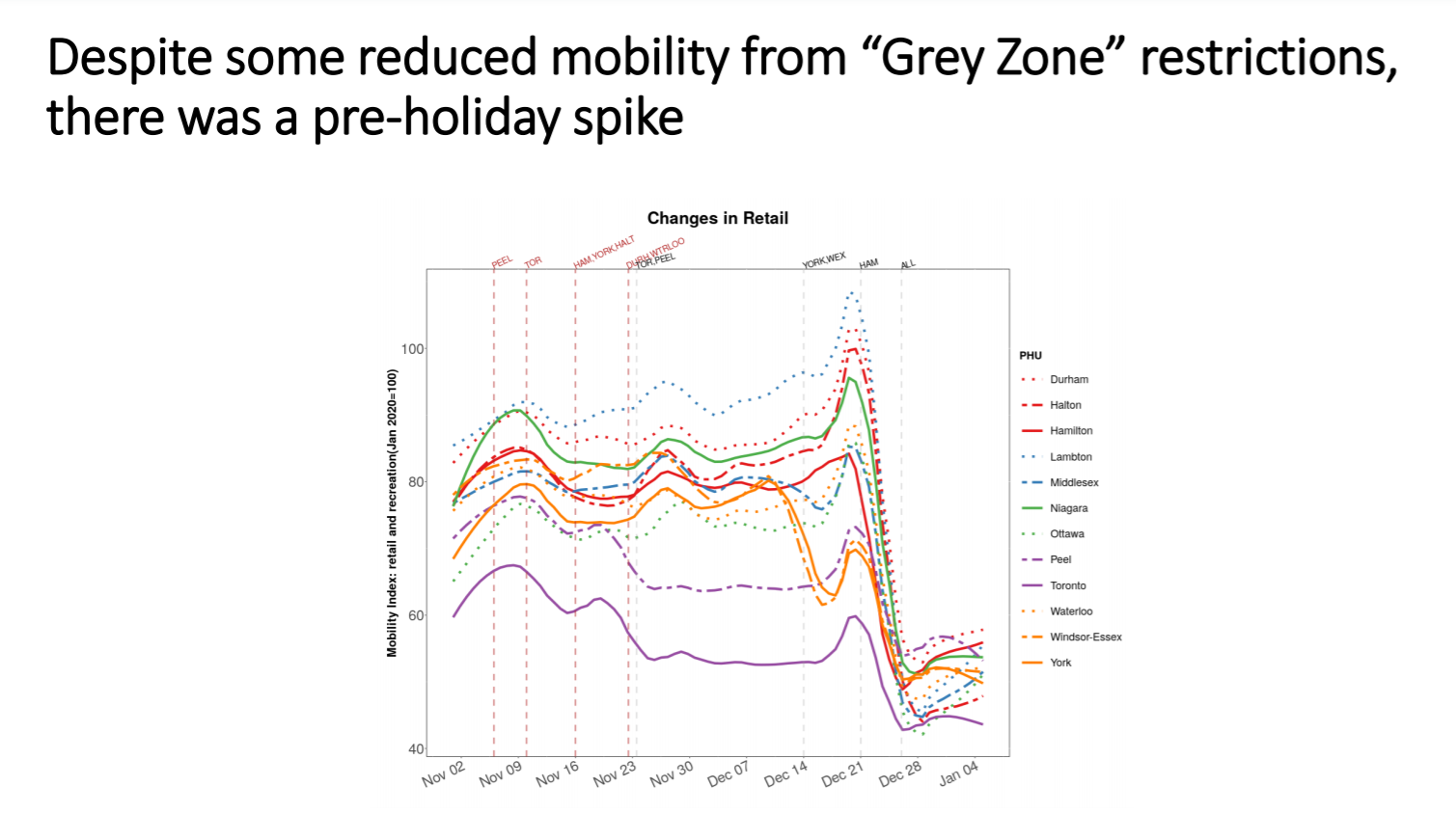
“If we do not follow these restrictions, COVID-19 will continue to aggressively spread before vaccines have the chance to protect us,” Brown said.
“This will have tragic consequences for us, for our health, for our province, for our health system.”
On the subject of the new COVID-19 variant, the province says though the mutation is more easily transmissible, there is no increase in disease severity and health officials are confident that the latest round of vaccines is likely still effective.

If however, the new strain – SARS-CoV-2 variant B.1.1.7 – spreads in the community, doubling time for cases could drop to 10 days in March.
On Tuesday, Ontario confirmed there are now 16 cases of the variant first discovered in the United Kingdom, believed to be about 56 percent more transmissible.










